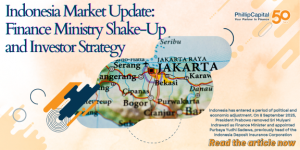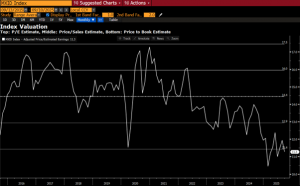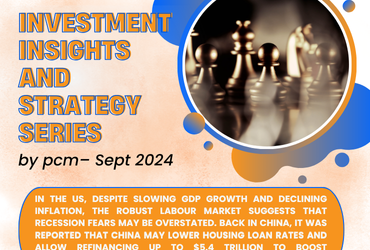
Indonesia has entered a period of political and economic adjustment. On 8 September 2025, President Prabowo removed Sri Mulyani Indrawati as Finance Minister and appointed Purbaya Yudhi Sadewa, previously head of the Indonesia Deposit Insurance Corporation. The reshuffle came amid public protests over living costs and taxes, underscoring growing pressure on the government to stimulate domestic demand while maintaining fiscal credibility.
Sri Mulyani was widely regarded as the guardian of Indonesia’s fiscal discipline, maintaining deficits within the 3% cap except during the pandemic. Her exit raises concerns about whether fiscal restraint will hold, particularly as political pressures mount.Purbaya Yudhi Sadewa is a seasoned technocrat who has worked across financial stability and economic policy. Markets interpret his appointment as a signal that fiscal policy will tilt more toward supporting growth and welfare priorities. The FY25 budget still targets a deficit of 2.8%, reflecting continuity of prudence, but implementation could shift. For example, instead of sharp regional budget cuts to fund new social programs, more moderate reallocations may be pursued to address growth concerns. Investors will be watching the 2026 final budget closely to judge how well the government balances expansion with discipline.
Monetary policy has turned decisively more accommodative. Bank Indonesia has cut rates by 100 basis points so far in 2025, bringing the policy rate to 5.00%. The easing is designed to stimulate lending and consumption, but it has eroded Indonesia’s relative yield advantage. The central bank has also absorbed a large share of government bond issuance, adding liquidity support. These measures, combined with weaker commodity revenues and stronger imports, have weighed on the rupiah. At the time of writing, the USD/IDR trades around 15,400–15,500, compared to below 15,000 earlier this year. With the carry trade appeal diminishing and the current account under pressure, the balance of risks for the currency remains tilted to the downside. Unless commodity prices recover or fiscal policy delivers a strong credibility signal, further IDR depreciation cannot be ruled out, in our view.
The equity outlook reflects a tug-of-war between supportive domestic policies and external vulnerabilities. On the positive side, the government’s pro-growth tilt should benefit banks, consumer finance, and retail. Subsidy programs and welfare initiatives can help sustain household consumption, while lower rates reduce borrowing costs and support corporate balance sheets. Corporate earnings also look set to rebound from a low base. Bloomberg consensus now projects 43.4% earnings growth in 2025 and 21.9% in 2026, reflecting expectations for recovery as policy support feeds through for Jakarta Composite Index (JCI). This provides a potential tailwind for valuations, especially in domestically oriented sectors. Interestingly, in contrast, Bloomberg consensus expects MSCI Indonesia earnings to contract by 8.3% in 2025, before rebounding sharply with 19.5% growth in 2026. The deviation mainly comes down to index composition and sector exposure.
The JCI, also called the IDX Composite, is a broad benchmark that includes every company listed on the Indonesia Stock Exchange, currently 910 constituents. This makes it far more representative of the domestic economy than narrower benchmarks like MSCI Indonesia Index, which covers only 18 large cap names that meet global investability standards. As a result, JCI captures the earnings rebound of many smaller, domestically oriented companies, while MSCI Indonesia Index is more heavily influenced by large banks and commodity exporters.
Headwind-wise, weaker rupiah raises costs for companies reliant on imports or carrying USD liabilities, squeezing margins. Top-line growth has slowed in recent years and could remain under pressure if global demand softens further. Foreign investor sentiment may also stay cautious, as Sri Mulyani’s departure removes a well-recognized symbol of fiscal discipline. Without clear signals from the new minister, Indonesia’s risk premium may remain elevated.
The JCI and MSCI Indonesia Index are both trading at more than two standard deviations below their 10-year historical averages, with valuations at 10.8x and 11.3x forward P/E, respectively, underscoring cautious investor sentiment and suggesting that much of the downside risk is already priced in. Interestingly, current valuations are also approaching the lows seen during the Liberation Day sell-off, highlighting how depressed sentiment has become. However, further weakness may be limited if earnings momentum and policy execution show improvement.
Figure 1: JCI Index 10-year P/E Chart

Source: Bloomberg, 10 September 2025
Figure 2: MSCI Indonesia Index 10-year P/E Chart

Source: Bloomberg, 10 September 2025
Investors seeking Indonesia exposure can consider our Managed UT Portfolio, which includes PMART UT, PMA UT, and PMART UT Flexi for targeted investment opportunities, However, allocation is kept small at 0.5%–1.0%. This is because our fund selection leans toward broader Asia and global strategies, which typically hold limited exposure to Indonesian equities. Our portfolio is available in both Conventional and Shariah options. Separately, our platform also offers selected UT funds with exposure to Indonesia-focused strategies.
Please click on the link to learn more or email us at cse.my@phillipcapital.com.my if you require any further information.
Disclaimer
The information contained herein does not constitute an offer, invitation, or solicitation to invest in any product or service offered by Phillip Capital Management Sdn Bhd (“PCM”). No part of this document may be reproduced or circulated without prior written consent from PCM. This is not a unit trust or collective investment scheme and is not an obligation of, deposit in, or guaranteed by PCM. All investments carry risks, including the potential loss of principal.
Performance figures presented may reflect model portfolios and may differ from actual client accounts’ performance. Variations in individual clients’ portfolios against model portfolios and between one client’s portfolio to another can arise due to multiple factors, including (but not limited to) higher relative brokerage costs for smaller portfolios, timing of capital injections or withdrawals, timing of purchases and sales, and mandate change (e.g., Shariah vs. conventional). These differences may impact overall performance.
Past performance is not necessarily indicative of future returns. The value of investments may rise or fall, and returns are not guaranteed. PCM has not considered your investment objectives, financial situation, or particular needs. You are advised to consult a licensed financial adviser before making any investment decisions.
While all reasonable care has been taken to ensure the accuracy and completeness of the information contained herein, no representation or warranty is made, and no liability is accepted for any loss arising directly or indirectly from reliance on this material. This publication has not been reviewed by the Securities Commission Malaysia.






